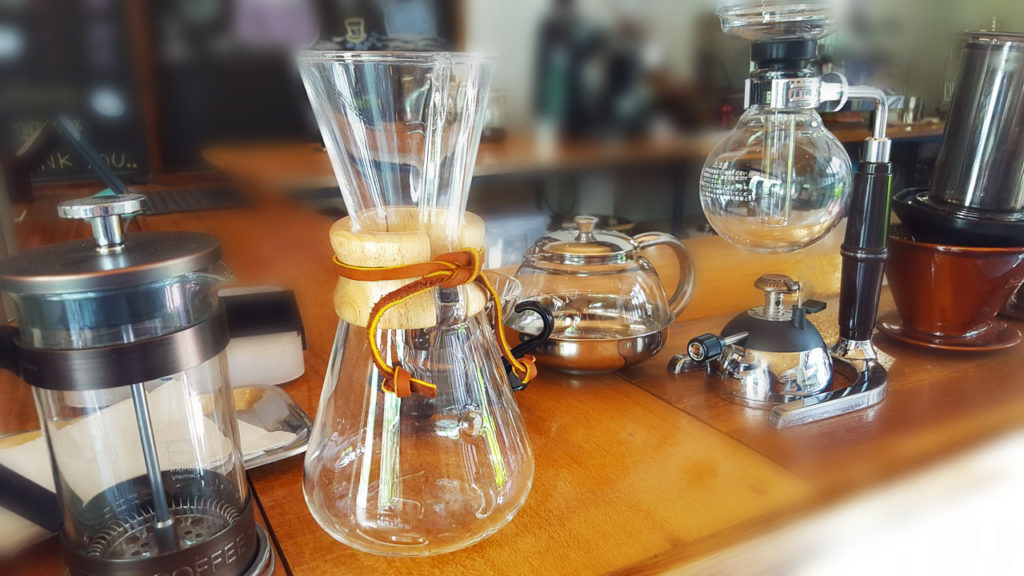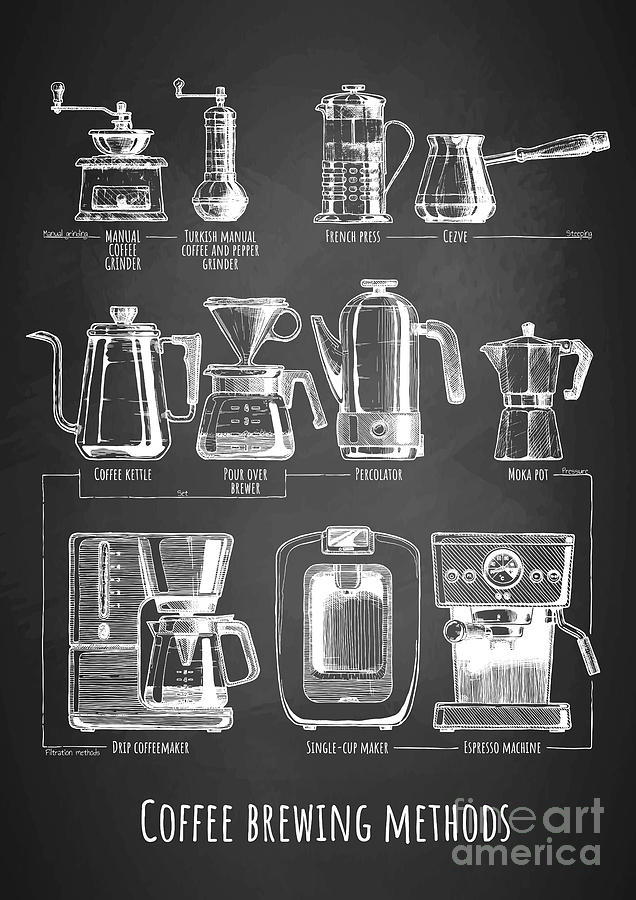The Ultimate Contrast of Popular Coffee Brewing Methods for Home Baristas
The Ultimate Contrast of Popular Coffee Brewing Methods for Home Baristas
Blog Article
The Science Behind Coffee Developing: How Temperature Level and Time Affect Your Drink
Recognizing the scientific research behind coffee developing discloses that temperature and time are not plain variables however essential aspects that dictate the beverage's taste account and total high quality. The optimal brewing temperature normally falls between 195 ° F and 205 ° F, while the period of removal varies significantly across various techniques. This interaction of factors can cause a cup that is either frustrating or delightful. As we discover the subtleties of these components, the concern emerges: how can one effectively equilibrium temperature and time to achieve that excellent mixture?
The Chemistry of Coffee Extraction
The chemistry of coffee removal dives into the complex procedures that change raw coffee beans right into the fragrant beverage appreciated worldwide. This improvement mainly entails the solubility of different substances existing in the beans, which are influenced by factors such as work dimension, water quality, and the developing method utilized.
During the brewing process, warm water serves as a solvent, extracting soluble compounds, consisting of caffeine, sugars, acids, and lipids, from the coffee grounds. Each substance adds to the taste account, aroma, and body of the final beverage. Acids are responsible for appetizing and bright notes, while oils add to an abundant mouthfeel.
The preliminary phases of developing remove acids and sugars, leading to a pleasurable acidity, while prolonged removal can lead to bitterness due to over-extraction of unwanted compounds. Understanding these chemical communications is vital for enhancing brewing methods, as the equilibrium between removal time and water temperature can considerably affect the total top quality of the coffee.
Perfect Developing Temperatures
Discovering the ideal brewing temperature level is necessary for opening the complete possibility of coffee tastes and fragrances - coffee brewing methods. Research study indicates that the optimal variety for brewing coffee lies in between 195 ° F to 205 ° F(90 ° C to 96 ° C) Within this variety, the removal procedure properly liquifies the preferable soluble substances in coffee beans, leading to a tasty and well balanced mug
Developing at reduced temperature levels, such as below 195 ° F(90 ° C ), might result in under-extraction, generating an acidic and weak brew with muted flavors. Conversely, developing at temperature levels surpassing 205 ° F(96 ° C) can cause over-extraction, producing a bitter and harsh taste because of the extreme dissolution of undesirable substances, such as tannins.
Additionally, the ideal developing temperature level can vary depending upon the coffee bean kind and roast degree. Lighter roasts frequently profit from somewhat greater temperatures to enhance their complex taste accounts, while darker roasts might be much better suited to lower temperatures to reduce resentment.
Inevitably, keeping accuracy in brewing temperatures is important for achieving an unified balance of tastes, making sure that every cup of coffee provides an enjoyable sensory experience.
Impact of Brewing Time
Brewing time plays a crucial duty in identifying the flavor account and overall high quality of coffee. Shorter developing times can result in under-extraction, leading to a weak or sour taste, as not sufficient soluble substances are liquified.
Optimal developing time varies depending upon the approach used and the work size of the coffee. As an example, a French press normally needs concerning 4 minutes, while espresso extraction is generally finished within 25 to 30 secs. It is vital to calibrate brewing time in conjunction with various other variables, such as water temperature level and coffee-to-water ratio, to attain the desired taste account.
Understanding the influence of developing time makes it possible for coffee enthusiasts to improve their brewing strategies, inevitably boosting the sensory experience of their cup (coffee brewing methods). With mindful interest to this variable, one can unlock the full capacity of the coffee, disclosing see this its distinct characteristics and subtleties
Brewing Methods and Their Impacts

For instance, approaches like French press and chilly mixture enable a longer steeping time, leading to a fuller body and durable taste because of boosted extraction of oils and soluble solids. Conversely, espresso developing makes use of high stress and a much shorter removal time, producing a focused shot that emphasizes intense flavors and a rich crema.
Pour-over techniques, such as Chemex or V60, provide an even more controlled extraction process, allowing the maker to adjust circulation price and water circulation, which can improve illumination and clearness. Percolation techniques cycle water with the coffee premises numerous times, leading to a stronger, frequently bitter taste.
Last but not least, making use of paper filters versus metal filters can also impact the last taste; paper filters normally generate a cleaner mug by capturing oils and fine bits, while steel filters enable even here are the findings more oils to travel through, adding to a fuller mouthfeel - coffee brewing methods. Recognizing these nuances can elevate the coffee experience considerably
Tips for Developing Your Brew
A well-executed brew can change even the most basic coffee right into a remarkable experience. To achieve this, focus to information is necessary. Begin with high-grade, newly baked beans, as their taste profile diminishes in time. Grind the beans right before making to take full advantage of freshness, making certain the grind dimension matches your developing technique-- coarser for French press and finer for coffee.
Water quality plays a crucial role; use filtered water without impurities. The ideal brewing temperature ranges between 195 ° F and 205 ° F(90 ° C to 96 ° C ) Too hot can swelter the coffee, while too awesome might under-extract tastes.
Timing is just as important. For immersion techniques, soaking for three to five minutes is ideal, whereas drip approaches usually take about five mins. Try out brew times to discover your recommended strength.

Conclusion
In summary, the complex partnership between temperature and time is vital in the coffee developing procedure. Following optimum developing temperature levels between 195 ° F and 205 ° F, along with specific timing customized per approach, makes certain the wanted flavor profile is accomplished. Comprehending these scientific principles empowers individuals to improve their brewing methods, eventually resulting in a more delightful and well balanced coffee experience. Proficiency of these variables is important for any coffee lover looking for excellence in their beverage.
Understanding the scientific research behind coffee brewing discloses that temperature level and time are not mere variables yet pivotal components that dictate the drink's taste account and general quality. Comprehending these chemical communications is critical for enhancing developing methods, as the equilibrium between removal time and water temperature can considerably affect the general high quality of the coffee.Developing time plays a crucial duty in establishing the flavor account and total high quality of coffee. By concentrating on these components-- bean top quality, grind dimension, water temperature, soaking time, and proportion-- you can boost your coffee developing procedure, resulting in a continually exceptional mug.
In summary, the complex relationship in linked here between temperature and time is extremely important in the coffee brewing process.
Report this page